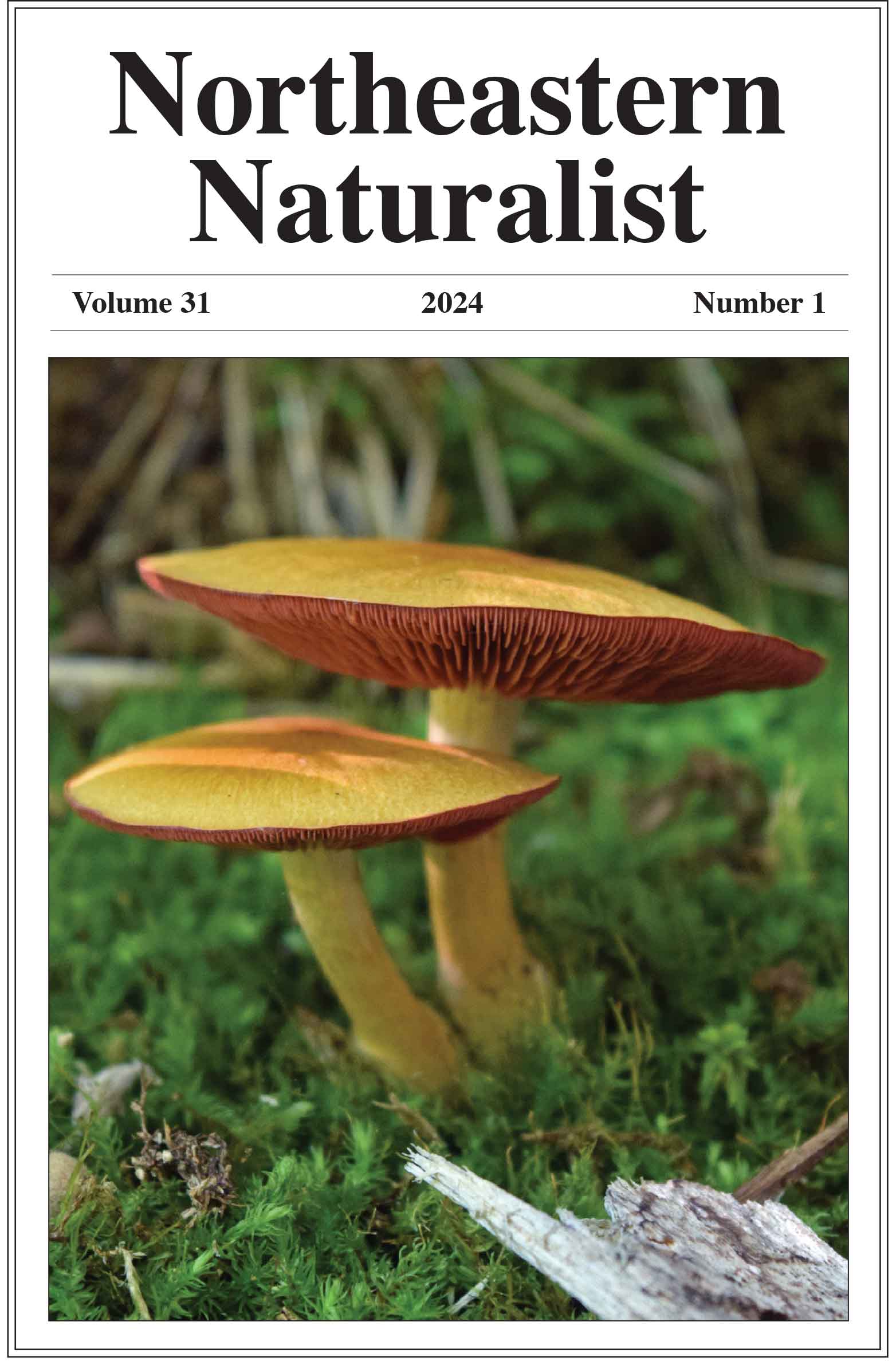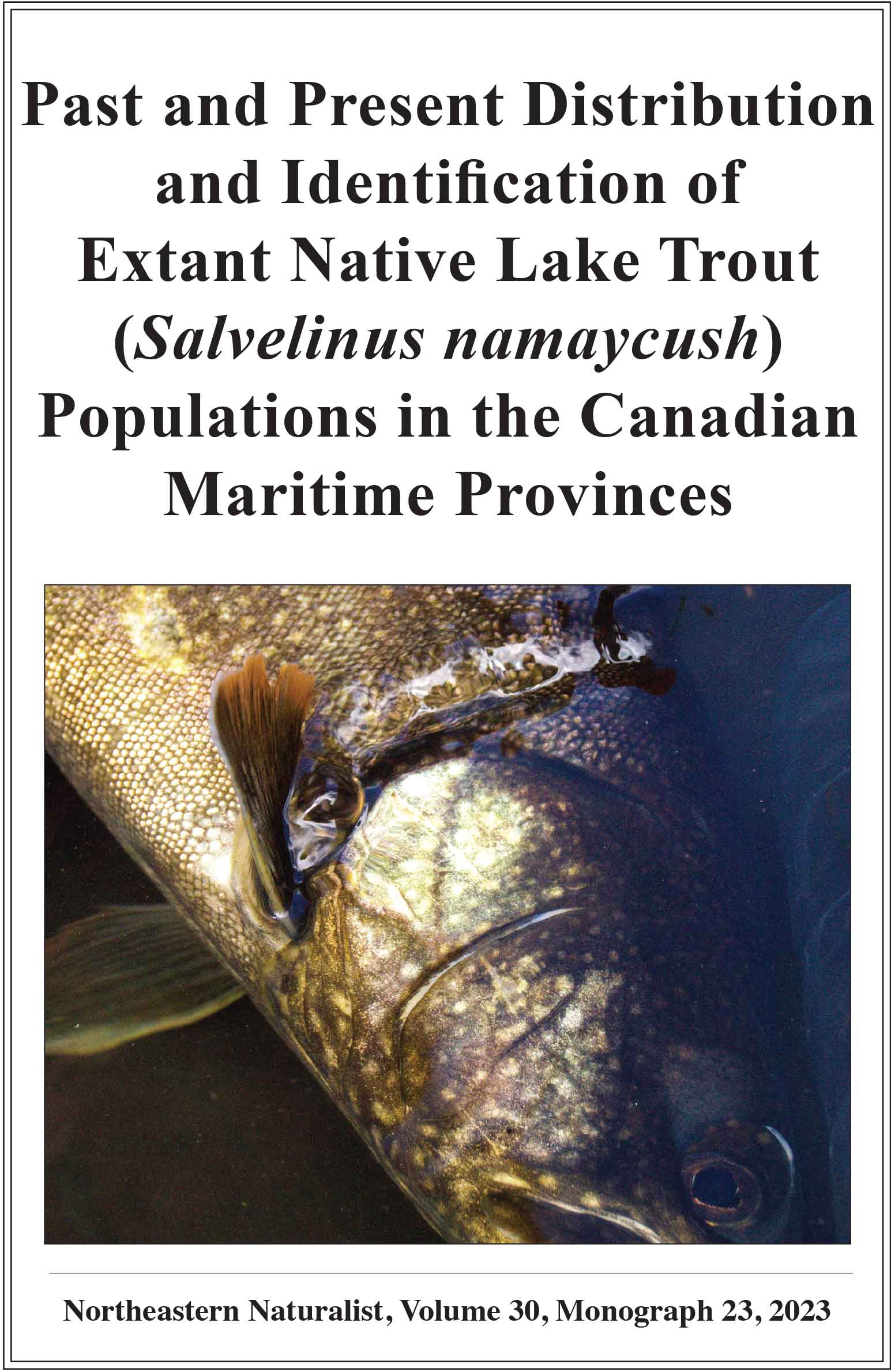Salinity Characteristics of Rocky Cliff Pools Used as Breeding Habitat by Spotted Salamanders (Ambystoma maculatum)
Stephen J. Ressel1,*, Emma E. Damm1, Wriley Hodge1, Georgia Q. Lattig1, Tess Moore1, Westly Reason1, Judith A. Tunstad1, and Jasper White1
1College of the Atlantic, 105 Eden Street, Bar Harbor, ME 04609. *Corresponding author.
Northeastern Naturalist, Volume 30, Issue 2 (2023): 212–225
Abstract
Ambystoma maculatum (Spotted Salamander) is a widely distributed species in the eastern United States whose aquatic breeding habitat has been well documented as being hydrologically diverse but always freshwater in chemical composition. On Mount Desert Island, ME, a population of Spotted Salamanders breed in an aggregation of pools located atop a coastal rock cliff that is subject to seawater intrusion from nearby wave action. We periodically measured salinity concentrations (in ppt) of 7 pools with the highest breeding activity from 2016 to 2021 to quantify pool salinities within and between 5 breeding seasons. Our findings confirm that this breeding habitat experiences sporadic and extreme bouts of salt intrusion from the adjacent ocean, causing salinity levels to vary markedly and unpredictably (0.1 ppt to 32.5 ppt) on a spatiotemporal scale. The presence of salamanders exhibiting apparent normal behavior in salinities greater than 12 ppt suggest an upper threshold of salt tolerance in this population that exceeds purported upper thresholds for the majority of amphibians studied to date. Future experimental work on this population holds great promise to deepen our understanding of the underlying mechanisms of salt tolerance in coastal populations of amphibians from both a physiological and evolutionary perspective.
![]() Download Full-text pdf (Accessible only to subscribers. To subscribe click here.)
Download Full-text pdf (Accessible only to subscribers. To subscribe click here.)
Access Journal Content
Open access browsing of table of contents and abstract pages. Full text pdfs available for download for subscribers.
Issue-in-Progress: Vol. 31 (2) ... early view
Check out NENA's latest Monograph:












 The Northeastern Naturalist is a peer-reviewed journal that covers all aspects of natural history within northeastern North America. We welcome research articles, summary review papers, and observational notes.
The Northeastern Naturalist is a peer-reviewed journal that covers all aspects of natural history within northeastern North America. We welcome research articles, summary review papers, and observational notes.